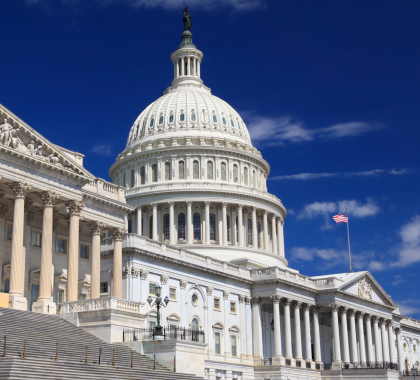Setting up what is certain to be a bruising showdown with Congress over Fiscal Year (FY) 2020 spending, President Donald Trump’s budget proposal recommends significant funding reductions in science programs at a slew of federal agencies.
If Congress approves the budget Trump unveiled on March 11, the proposed cuts would go into effect on October 1, 2019. Similar in size to the spending reductions Trump proposed in FY 2018 and FY 2019, this year’s budget blueprint will have to get through a Congress in which Democrats control the House of Representatives.
Proposing Steep EPA Cuts
Largely the work of the White House Office of Management and Budget (OMB), the proposal would dramatically cut funding for the U.S. Environmental Protection Agency (EPA).
EPA’s budget would be reduced from $8.8 billion to $6.1 billion, with spending for science and technology cut by $440 million. The White House proposes cutting EPA’s Atmospheric Protection Program, which reports on greenhouse gases, by 90 percent, and reducing funding for the Office of Energy Efficiency and Renewable Energy by 70 percent.
The budget cuts proposed for EPA by the White House won’t jeopardize the agency’s mission to protect public health and the environment, says EPA Administrator Andrew Wheeler.
“This commonsense budget proposal would support the agency as it continues to work with states, tribes, and local governments to protect human health and the environment,” Wheeler said in a statement.
DOE, NOAA Reductions Proposed
The White House proposes allocating $5.5 billion to the U.S. Department of Energy’s (DOE) Office of Science, about 16 percent below the FY 2019 amount. Among DOE’s cuts, the budget request calls for eliminating DOE’s Advanced Research Projects Agency–Energy (ARPA-E), which funds experimental technologies the private sector is unwilling to back.
For FY 2019, the White House requested approximately $1.4 billion for the National Oceanic and Atmospheric Administration’s (NOAA) satellite program, including polar weather satellites, space weather instruments, and satellite data collection systems. For FY 2020, the Trump administration has proposed reducing NOAA’s satellite budget by about $200 million, to $1.2 billion.
The plan suggests a budget of $7.1 billion for National Science Foundation, about 12 percent less than the current level.
‘Wasting Money Is Never Good’
Too much of what the federal government spends on science goes to flawed or frivolous research, says Dan Kish, a senior fellow at the Institute for Energy Research.
“Wasting money is never good, so it’s a good thing the Trump administration is looking for some accountability,” said Kish. “Taxpayers are tired of business-as-usual practices at our bloated bureaucracies, and a reckoning is long overdue.”
Congress is likely to stymie Trump’s attempts to rein in federal spending, says David Wojick, a senior policy analyst at the Committee for a Constructive Tomorrow (CFACT).
“Congress will continue to ignore the president’s valiant attempt to trim the fat at these agencies,” Wojick said. “The president used to be able to refuse to spend unwise appropriations, but those days are long gone.”
Bonner R. Cohen, Ph.D. ([email protected]) is a senior fellow at the National Center for Public Policy Research and a senior policy analyst with CFACT.





